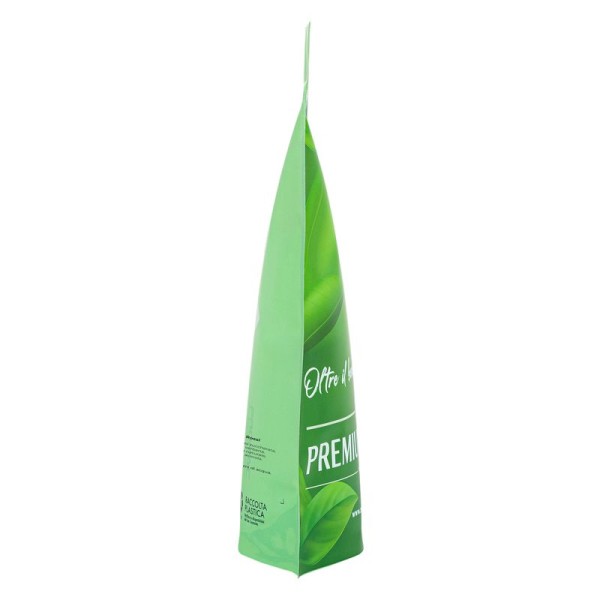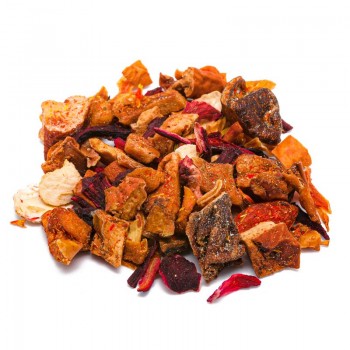This light and refreshing drink , is created with a mixture of cranberries and lime , to provide thirst-quenching qualities, with of exquisite balanced notes between sweet and sour.
The recipe of the fruit infusion is also excellent for streamlining and purifying, thanks to the properties of the ingredients.
Lime and cranberry infusion: properties and benefits
The properties of the fruits contained in this drink are invaluable, as it contains many antioxidants . Those of citrus fruits are associated with the properties of cranberry, to give a spa salon treatment.
The infusion can improve circulation, provide anti-aging properties and help deflate the body from the effects of water retention. The consumption of blueberries promotes a positive action in regulating and improving the balance between vasodilation and vasoconstriction in the vascular wall.
By improving blood flow and blood pressure regulation, it helps the well-being of the cardiovascular system. < br /> This action of cranberries is due to the high quantities of anthocyanins and proanthocyanidins, substances with an excellent antioxidant power. Limes are also rich in these active compounds for the body's well-being, such as ascorbic acid (vitamin C), and other flavonoids.
For those suffering from metabolic syndrome, an infusion with beneficial properties for the circulation, and also a diuretic, can be useful. By hindering water retention, the ingredients of the herbal tea bring benefits to the line and help the body to expel excess toxins. In addition, cranberries are known to help against irritation of the urinary tract.
The acids contained (malic, benzoic, citric acid) have purifying properties, while the proanthocyanidins contained can prevent the action of some bacteria in the tract. urinary (as well as in the oral cavity, protecting teeth and gums).
Cranberries can maintain the well-being of the liver with their detox action .
For those who want to lose weight, this infusion can support a correct diet, with its detoxifying action.
The vitamin C contained in the lime , is enhanced by the high quantity of acerola , is a useful nutrient in this infusion, to strengthen the immune system. It increases the production of white blood cells, which help protect your body from infection.
In addition, vitamin C contributes to the production of collagen, a protein essential for wound repair and anti-aging effects on the skin.
Among the antioxidants contained, the polyphenols of the blueberry combine with those of the other ingredients, for an anti-aging effect. Lemon and acerola are rich in vitamin C, while verbena has natural relaxing and anti-inflammatory qualities.
The mountain eternal is useful for the well-being of the liver and gallbladder, and safflower flowers give diuretic properties and stimulate circulation .
Other fruits give the infusion their thirst-quenching properties, as well as healthy ones, such as lemon, apple, pineapple and papaya peel.
These ingredients provide mineral salts to be replenished when you sweat or exercise. Lime in particular has good amounts of potassium. In particular, lime and lemon are refreshing foods, which also help digestion.
The citric acid contained supports the body even when it has to dissolve fats during digestion, and supports the action of gastric juices. In this way it promotes correct assimilation, reduces burning and gastroesophageal reflux.
Origins and History of cultivation
The blueberry is a berry that comes from the undergrowth, from a dwarf shrub native to North America.
Ancient Mediterranean civilizations did not know it, until with the arrival of Europeans in the Americas, it has been known and appreciated on a par with the bilberry. It was widely used by Native Americans, however, who gathered cranberries for sweet and beneficial recipes such as pemmican (cranberry along with meat and other fats). The blueberry was eaten fresh in the summer and dried in the winter.
They also used blueberries in traditional medicine to treat urinary infections, oral hygiene, heal wounds, swellings. In addition, they made a red dye for carpets and for the body. When it began to spread around the world, it was initially through jam and cranberry juice, or through the famous cranberry sauce on Thanksgiving Day or at Christmas.
In the eighteenth century it was used in pharmacology to calm inflamed bile. In the nineteenth century it was stator also recommended as a food rich in vitamin C and for the prevention of scurvy (dehydrated for sailors). Today it is also cultivated in Europe, in Italy, Germany, Sweden.
The European version we know, the cranberry Vaccinium vitis idaea, has been widespread on our territory for centuries and has taken different popular names: mountain grape, vine of Mount Ida in Greece where Zeus, vineyard of bear, murella, berry of the marshes was born.Lime or Kime, also known as limetta, is a cross between lemon and cedar, with some differences from these two citrus fruits. It originated in the regions of Asia, Malaysia and India, as a natural hybrid.
Unlike other plants of the citrus genus, which subtropics, lime prefers a tropical climate. For this reason, it was little known in Europe and in the Mediterranean it was once widespread only in Egypt.It began to spread when it was exported from India to England, on English ships that had to undertake long voyages, as an anti-scurvy citrus fruit. > It first arrived in the New World through the Portuguese in the 16th century, in Mexico and Florida, where the lime plant is still cultivated today. Today its cultivation is widespread mainly in Latin America and the Caribbean, in Mexico and in Southeast Asia. The fruit is used as a flavoring for drinks and dishes.
Dehydrated lime is often used as an ingredient in cocktails and snacks.
Plant and flowers
The blueberry plant can derive from evergreen dwarf shrubs, part of the Oxycoccus subgenus of the Vaccinium genus: Vaccinium microcarpum or Oxycoccus microcarpus, Vaccinium oxycoccos or Oxycoccus palustris. They are found in North America and Chile, Northern Europe and North Asia.
The lime plant is Citrus aurantifolia, of the Rutaceae family. There are several species of lime such as Key lime (Citrus aurantifolia), Persian lime (Citrus latifolia), Desert lime (Citrus glauca) and Kaffir lime (Citrus hystrix). Each of these species possesses unique characteristics.
The lemon derives from Citrus limon, a plant native to Asia and part of the botanical family of the Rutaceae. Known for its beneficial fruits and fragrant flowers, it gives different types of lemons, from light yellow to warm yellow. The plant prefers tropical and semi-tropical climates.
The Mountain Sempiterno is botanically the Antennaria dioica, it is a small perennial plant, belonging to the Asteraceae family. It grows to a maximum of about 20 cm, and is found mainly in the cold and temperate areas of Europe, Asia and North America.
The plant of the papaya is the Carica papaya is a tree with little branching, and reaches up to 10 meters in height in some cases. It grows in warm or temperate climates, and flowers sprout continuously. The fruit consists of three edible parts: the pulp, seeds and leaves of the plant, which can be cooked as a vegetable.
The Ananas comosus is a plant of the Bromeliaceae family, widespread in tropical countries such as Thailand, Malaysia, Indonesia or Australia. It is a not very tall fruit plant, which loves full sun exposure to give its famous and succulent fruits.
The apple comes from the Malus domestica plant of the Rosaceae family. It is a tree native to Asia, now widespread throughout the planet. The fruits differ in colors and varieties, used for millennia in human nutrition.
Verbena officinalis is a genus of the Verbenaceae family, native to Europe. It is a perennial herb, growing up to 70cm in height. It has toothed leaves and spikes that contain clusters of mauve flowers.
The fruit called acerola comes from Malpighia punicifolia, a plant native to the Lesser Antilles, cultivated in all the tropics. It blooms in summer and produces the so-called acerola cherries, known for their high content of vitamin C.
The safflower flowers derive from the Carthamus tinctorius plant, a highly branched annual of the Asteraceae family . Also called zafferanone (used as a substitute for saffron), it originates from arid environments, with seasonal rains. The yellow-orange flowers are used for infusions and to make cosmetics.
Nutritional values of the lime and cranberry infusion
This infusion contains high levels of ascorbic acid (vitamin C), flavonoids (anthocyanins), limonoids, kaempferol and quercetin.
Other antioxidants include beta-carotene, lutein and zeaxanthin. It also provides minerals such as potassium, calcium, magnesium, phosphorus, copper, zinc and iron.
How to use the ingredients

![infuso lime mirtilli rossi [Natura d'Oriente] infuso lime mirtilli rossi [Natura d'Oriente]](https://www.naturadoriente.com/3551-large_default/lime-infused-cranberries.jpg)




![infuso lime mirtilli rossi [Natura d'Oriente] infuso lime mirtilli rossi [Natura d'Oriente]](https://www.naturadoriente.com/3551-home_default/lime-infused-cranberries.jpg)




 No reward points for this product.
No reward points for this product.

![infuso pesca e vaniglia [Natura d'Oriente]](https://www.naturadoriente.com/3538-home_default/infused-peach-vanilla.jpg)


![infuso pesca melone [Natura d'Oriente]](https://www.naturadoriente.com/3535-home_default/infused-peach-melon.jpg)

![infuso frutti rossi [Natura d'Oriente]](https://www.naturadoriente.com/3542-home_default/infusion-of-red-fruits.jpg)








